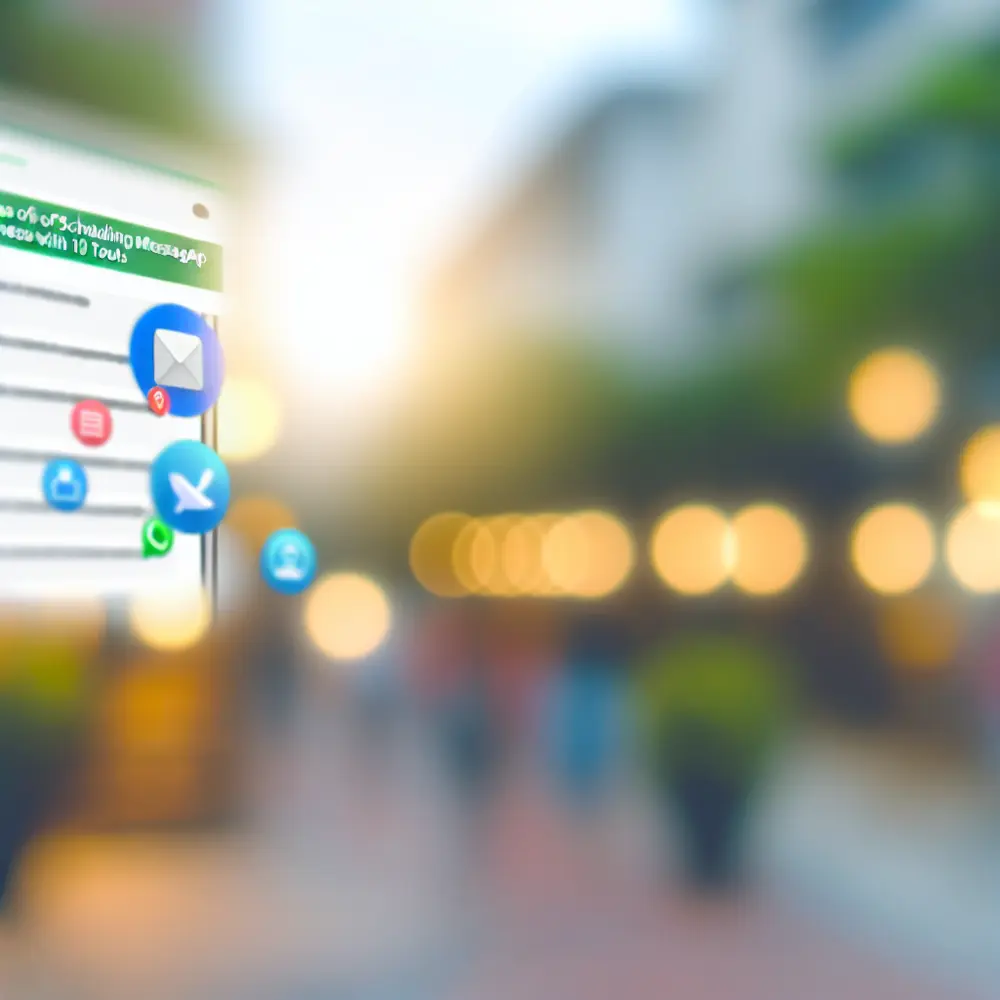A well-structured sales action plan is essential for any business aiming to enhance its sales performance and ensure consistent growth. In today’s competitive marketplace, having a clear and effective strategy not only aligns your sales team but also increases the likelihood of achieving your business targets. With so many variables influencing sales success, it can be challenging to navigate the landscape without a roadmap. A well-developed sales action plan acts as that roadmap, providing a blueprint for success that takes into account the unique aspects of your business environment.
As we delve deeper into creating a robust sales action plan, we will explore essential tips that will guide you through every step of the process. From setting clear goals and understanding your market to leveraging technology and fostering continuous improvement, these strategies will help you optimize your sales efforts effectively. By the end of this article, you will have the insights needed not just to create a sales action plan, but also to implement it successfully for sustained business growth.
Whether you are a seasoned sales manager or a business owner just starting, mastering the nuances of a sales action plan is undeniably beneficial. Each tip outlined in this article will provide practical advice and methodologies that can improve your sales processes and boost overall performance. Stay with us as we uncover the fundamental components of a successful sales action plan that can lead to tangible results and heightened sales efficiency.
Understanding the Sales Action Plan: A Blueprint for Success
A sales action plan is a critical component for any organization aspiring to enhance its sales performance. To effectively assemble and implement such a plan, it is essential to establish clear objectives that align with the overall business strategy. Start by defining specific, measurable, achievable, relevant, and time-bound (SMART) goals. This clarity not only provides direction but also serves as a benchmark for evaluating success. Consider integrating input from various stakeholders, including marketing and product teams, to ensure all perspectives are considered in shaping the sales strategy.
Once objectives are established, it is vital to develop a detailed sales strategy that outlines the methods and processes your team will employ to reach those goals. This includes targeting specific customer segments, defining unique selling propositions, and determining the sales channels that will be most effective for your product or service. By segmenting your market and tailoring your approach to meet the specific needs of these groups, you can significantly enhance the chances of closing deals. Regularly revisiting and refining these strategies based on market feedback will bolster your sales optimization efforts.
The implementation phase requires a structured approach to execution. Equip your sales team with the necessary training and resources to ensure they understand the sales process and are well-prepared to engage with potential customers. Consider using sales enablement tools and platforms that can streamline processes, provide essential data insights, and facilitate effective communication within the team. Monitoring the implementation through regular check-ins and performance metrics helps to keep the team focused and accountable.
Lastly, fostering a culture of continuous improvement is paramount for long-term sales success. Encourage your sales team to share experiences and best practices while utilizing performance data to identify areas for growth. Adaptability to market changes and customer behavior will not only drive sales optimization but also solidify your organization’s competitive advantage. By systematically assembling and implementing a comprehensive sales action plan that embraces these principles, businesses can expect to see significant improvements in their sales outcomes and overall performance.
Tip 1: Set Clear Sales Goals and Objectives
Creating an effective sales action plan is essential for achieving business goals and optimizing sales performance. The first step in assembling your plan is to set clear and measurable objectives. This clarity allows you to align your sales strategies with the broader business vision. Define SMART goals—Specific, Measurable, Achievable, Relevant, and Time-bound—that will serve as a roadmap for your sales team. By establishing clear targets, everyone knows what success looks like, fostering accountability and focus.
Next, understanding your target audience is crucial for optimizing sales efforts. Conduct thorough market research to identify customer needs, preferences, and pain points. Segment your audience based on relevant criteria, such as demographics, behavior, and purchasing history. This insight enables you to tailor sales pitches and marketing strategies to specific segments, increasing the likelihood of engagement and conversion. Employing buyer personas can further help your team understand whom they’re selling to, crafting personalized approaches that resonate with potential clients.
Once you comprehend your audience, it’s important to define your sales strategies. Consider the various channels through which you’ll reach your customers—be it digital marketing, direct sales, or community engagements. Implement a multi-channel approach to diversify your outreach and optimize your engagement strategies. Additionally, leverage technology to support your sales team; incorporating CRM systems can streamline lead tracking, follow-ups, and performance metrics, ultimately enhancing efficiency and productivity.
Finally, measure and evaluate your sales performance regularly. Establish key performance indicators (KPIs) that align with your sales goals, such as lead conversion rates, sales cycle length, and customer retention rates. Utilize data analytics tools to gain insights into these metrics, allowing you to adjust tactics dynamically based on performance. Regular reviews and adjustments to the action plan ensure that your sales strategy remains relevant to market conditions and customer needs, ultimately driving long-term sales optimization and business growth.
Tip 2: Analyze Your Market and Customer Needs
Developing a comprehensive sales action plan is crucial for businesses looking to optimize their sales processes and achieve measurable results. A well-structured plan not only outlines the strategies for reaching sales targets but also details implementation protocols that keep the team aligned and focused. In today’s competitive market, effective sales optimization can mean the difference between a thriving business and one that struggles to keep pace with consumer demands.
The first step in assembling an effective sales action plan is to conduct a thorough analysis of your current sales processes. This includes assessing your strengths and weaknesses, understanding customer needs, and identifying market trends. By gathering data and insights, you can tailor your approach to align with your organization’s goals and your customers’ preferences. Establishing clear objectives is paramount; aim for specific, measurable, achievable, relevant, and time-bound (SMART) goals to drive your sales efforts.
Next, it’s essential to engage your sales team in the planning process. Their insights and experiences can provide valuable contributions to the action plan, leading to a greater sense of ownership and accountability. Encourage open communication, allowing team members to share their ideas and potential challenges they foresee. This collaborative approach not only fosters a positive team culture but also ensures that your plan is realistic and practical from those who will execute it.
Implementation is critical in ensuring the success of your sales action plan. Allocate resources effectively, assign responsibilities, and establish timelines for each component of the plan. Utilize project management tools to help track progress and facilitate accountability among team members. Regular check-ins and progress reviews will help identify any roadblocks early on, allowing for timely adjustments to keep the plan on track. As you roll out your strategy, prioritize training and development for your team, empowering them with the skills and knowledge needed to execute the plan effectively.
Tip 3: Develop a Targeted Sales Strategy
A sales action plan is a critical component for any organization aspiring to enhance its sales performance. To effectively assemble and implement such a plan, it is essential to establish clear objectives that align with the overall business strategy. Start by defining specific, measurable, achievable, relevant, and time-bound (SMART) goals. This clarity not only provides direction but also serves as a benchmark for evaluating success. Consider integrating input from various stakeholders, including marketing and product teams, to ensure all perspectives are considered in shaping the sales strategy.
Once objectives are established, it is vital to develop a detailed sales strategy that outlines the methods and processes your team will employ to reach those goals. This includes targeting specific customer segments, defining unique selling propositions, and determining the sales channels that will be most effective for your product or service. By segmenting your market and tailoring your approach to meet the specific needs of these groups, you can significantly enhance the chances of closing deals. Regularly revisiting and refining these strategies based on market feedback will bolster your sales optimization efforts.
The implementation phase requires a structured approach to execution. Equip your sales team with the necessary training and resources to ensure they understand the sales process and are well-prepared to engage with potential customers. Consider using sales enablement tools and platforms that can streamline processes, provide essential data insights, and facilitate effective communication within the team. Monitoring the implementation through regular check-ins and performance metrics helps to keep the team focused and accountable.
Lastly, fostering a culture of continuous improvement is paramount for long-term sales success. Encourage your sales team to share experiences and best practices while utilizing performance data to identify areas for growth. Adaptability to market changes and customer behavior will not only drive sales optimization but also solidify your organization’s competitive advantage. By systematically assembling and implementing a comprehensive sales action plan that embraces these principles, businesses can expect to see significant improvements in their sales outcomes and overall performance.
Tip 4: Equip Your Team with the Right Tools and Resources
A well-structured sales action plan is essential for any business aiming to optimize its sales process and achieve long-term success. The first step in assembling an effective sales action plan is to define clear objectives. By setting specific, measurable, achievable, relevant, and time-bound (SMART) goals, businesses can create a roadmap that guides their sales efforts and aligns them with overall company objectives. This clarity not only motivates the sales team but also allows for accurate tracking of progress and performance.
Next, it’s crucial to conduct a thorough analysis of the target market and customer demographics. Understanding the needs, preferences, and behaviors of potential clients enables sales professionals to tailor their strategies accordingly. Utilizing data analytics tools can provide valuable insights into market trends and customer purchasing patterns, facilitating effective segmentation and targeted sales strategies. A well-informed sales team can then engage prospective customers in a meaningful way, increasing the chances of conversion.
Another crucial aspect of your sales action plan should be the identification and selection of appropriate sales channels. Whether it’s direct sales, online platforms, or partnerships, choosing the right mix of channels helps in reaching the target audience effectively. Each channel has its unique advantages, and a diversified approach can enhance market penetration and customer engagement. Additionally, utilizing technology to streamline these processes — from customer relationship management (CRM) systems to sales automation tools — can improve efficiency and efficacy.
Lastly, ongoing training and development of the sales team cannot be overlooked. Regular workshops, coaching sessions, and performance feedback mechanisms are essential for honing skills and adapting strategies to emerging market changes. By fostering a culture of continuous improvement, businesses can ensure their sales force is equipped with the latest industry knowledge and skills. This commitment to learning, paired with a well-articulated sales action plan, positions any organization to not only meet but exceed its sales goals consistently.
Tip 5: Train and Motivate Your Sales Team
Creating a robust sales action plan is essential for business owners and sales managers seeking to optimize their sales processes and boost overall performance. To effectively assemble and implement this plan, the first step involves setting clear, measurable sales goals. These goals should align with the overall business objectives and be broken down into specific targets for both individual team members and the organization as a whole. By establishing well-defined goals, businesses can better track progress and adjust strategies as necessary.
Another critical aspect is understanding the current sales process. This entails analyzing existing workflows, identifying bottlenecks, and recognizing strengths that can be further leveraged. Sales optimization often starts with a thorough evaluation of customer interaction points, from lead generation to closing deals. By mapping out the entire sales journey, businesses can pinpoint areas for improvement, whether that means streamlining communication or enhancing training for sales staff.
Furthermore, incorporating technology into the sales action plan can yield significant benefits. Sales CRM tools provide valuable insights into customer behavior and help automate repetitive tasks. This not only saves time but also allows sales teams to focus on building relationships and closing deals. Embracing data analytics can also enhance decision-making; by analyzing customer data and sales metrics, professionals can fine-tune their approaches and predict trends more accurately.
Finally, it’s essential to foster a culture of continuous learning and adaptation within the sales team. Regular training sessions that focus on new techniques, tools, and market trends can empower sales professionals to stay competitive. Furthermore, creating feedback loops where team members can share insights and experiences can facilitate a more agile response to changing market conditions. By embedding these practices into the sales action plan, businesses can ensure a dynamism that not only drives sales today but also sets the stage for future growth.
Tip 6: Monitor and Measure Performance
Assembling an effective sales action plan requires a strategic approach that aligns with your business goals while prioritizing operational efficiency. A well-structured plan not only delineates your sales objectives but also maps out the necessary steps to achieve them, facilitating clear communication among team members. To create this plan, first identify and define your sales goals—these should be specific, measurable, achievable, relevant, and time-bound (SMART). Set realistic targets that motivate your team and guide their efforts in a focused manner.
Sales optimization should be a central theme in your action plan. Analyzing previous sales performances and identifying key areas for improvement is crucial. Utilize data analytics tools to evaluate conversion rates, customer feedback, and sales cycle lengths. By understanding the factors that influence your sales process, you can implement targeted initiatives that enhance not only productivity but also customer satisfaction. Empower your sales team with the insights gained from this data, allowing them to tailor their approaches to meet client needs effectively.
Implementation of the sales plan requires regular training and support for your sales team. Conduct workshops and training sessions to ensure that every team member is well-versed in the plan while being equipped with essential skills and techniques. Additionally, instill a culture of continuous learning and adaptability within your team. This will empower them to respond effectively to market changes and customer demands, ensuring that they remain on the forefront of your sales strategy.
Finally, establish a system for monitoring and evaluating the progress of your sales action plan. Regularly review sales metrics and gather feedback from your team to identify what is working well and where adjustments are needed. This proactive approach fosters accountability and keeps the sales strategy aligned with overarching business goals. By nurturing a dynamic environment where changes can be swiftly implemented based on real-time data and insights, you are more likely to achieve sustainable sales growth while optimizing your overall sales process.
Tip 7: Adjust Your Plan Based on Feedback and Results
An effective sales action plan is crucial for any business that aims to enhance its sales performance and achieve targets consistently. A well-structured sales action plan serves as a roadmap that outlines the objectives, strategies, and actions required to improve sales outcomes. Business owners and sales managers should prioritize developing a comprehensive plan that takes into account unique challenges and opportunities within their market. Begin by clearly defining your sales goals, ensuring they are specific, measurable, achievable, relevant, and time-bound (SMART). This clarity will allow your team to focus on driving results effectively.
To optimize sales efforts, it is essential to analyze your current sales metrics and performance data. Identify areas that need improvement and leverage this data to inform your tactics. Establish benchmarks to gauge progress and adjust your strategies accordingly. Incorporating tools for sales optimization—such as Customer Relationship Management (CRM) systems—can streamline processes, improve communication, and enable the sales team to track their interactions with potential clients effectively. By continuously monitoring performance, companies can pivot swiftly when strategies fall short of expectations.
Another cornerstone of an effective sales action plan is the training and development of your sales team. Investing in ongoing training ensures that your team is equipped with the latest sales techniques and industry knowledge. Regular workshops and feedback sessions can help in refining their skills, fostering a culture of continuous improvement and motivation. Moreover, cultivated sales culture encourages collaboration and sharing of best practices, leading to strengthened team dynamics and improved overall performance.
Finally, marketing alignment is a critical factor in the successful execution of a sales action plan. Sales and marketing teams should work in tandem to ensure that messaging, branding, and target lists are cohesive. By aligning promotional efforts with sales strategies, businesses can create a seamless customer journey, ultimately enhancing conversion rates. Collaboration on lead generation campaigns and sharing insights from customer interactions will foster a more unified approach, significantly boosting sales results.
Tip 8: Foster Strong Customer Relationships
A successful sales action plan is fundamental for driving performance and achieving business goals. When assembling and implementing your plan, focus on clarity and structure. Begin by defining clear objectives that align with your overall business strategy. Specific, measurable, achievable, relevant, and time-bound (SMART) goals can help in assessing success and provide motivation for your sales team. Utilize these objectives to set targets that your sales team can aim for, ensuring that everyone understands their role in achieving these goals.
Next, conduct a thorough analysis of your current sales processes. Identify strengths and weaknesses within your current strategy, and seek areas for optimization. Sales optimization involves examining your sales funnel, understanding buyer behaviors, and measuring conversion rates at each stage. Tools such as CRM systems can provide valuable insights into customer interactions and help identify bottlenecks in the sales process. By leveraging this data, you can make informed decisions on how to refine your approach, streamline operations, and improve efficiency.
In order to engage your sales team effectively, gather input during the planning stage. Involve your team members in discussions about strategies, sales techniques, and tools that could enhance productivity. Their firsthand experience can uncover issues that might not be visible in data alone. Workshops or brainstorming sessions can foster collaboration and help your team feel invested in the sales action plan. Clear communication regarding the final strategy is essential, ensuring that every member understands their responsibilities and the overall vision.
Lastly, implement a robust tracking system to measure progress against your established goals. Regular check-ins and performance reviews can help maintain momentum and allow for necessary adjustments. Assess your team’s performance data against set benchmarks, and celebrate achievements to boost morale. As market conditions evolve, your sales action plan should remain dynamic. Continuously assess its effectiveness, adapting strategies based on feedback and performance metrics. This flexibility will not only enhance your sales efforts but also prepare your team for future challenges and opportunities.
Tip 9: Leverage Technology for Sales Optimization
A successful sales action plan is a crucial element for any business aiming to optimize its sales processes. By taking a systematic approach to assembling and implementing a sales action plan, business owners, sales managers, and customer service professionals can significantly boost their company’s performance. The first step in this process is to set clear, measurable sales goals that align with your organization’s overall objectives. These goals should be specific, attainable, and time-bound, allowing your team to gauge their progress and success effectively.
After establishing your sales goals, the next phase involves identifying your target market. This requires an in-depth analysis of customer demographics, preferences, and behavior. By understanding who your ideal customers are and what they need, you can tailor your sales strategies specifically to meet those requirements. Employing tools like buyer personas and market segmentation can help in refining your approach, ensuring that your team is focused on the right audience to maximize sales potential.
Proficient training and development of your sales team follow closely behind the foundational steps. Investing in ongoing education enhances the skills and knowledge necessary for your sales personnel to thrive. This might include workshops on negotiation techniques, product knowledge, or effective communication skills. Empowering your sales force with the necessary tools and training ensures they are well-prepared to confront challenges and engage customers convincingly.
Lastly, consistently measuring and analyzing sales performance is vital for continued optimization. Use metrics and KPIs to evaluate the effectiveness of your sales strategies and the performance of your team. Regularly reviewing these insights allows for timely adjustments, ensuring that your sales action plan remains aligned with market trends and customer needs. By fostering a culture of feedback and continuous improvement, your organization can adapt and thrive, ultimately leading to increased sales and sustained business growth.
Tip 10: Create a Continuous Improvement Culture
An effective sales action plan is crucial for any business that aims to enhance its sales performance and achieve targets consistently. A well-structured sales action plan serves as a roadmap that outlines the objectives, strategies, and actions required to improve sales outcomes. Business owners and sales managers should prioritize developing a comprehensive plan that takes into account unique challenges and opportunities within their market. Begin by clearly defining your sales goals, ensuring they are specific, measurable, achievable, relevant, and time-bound (SMART). This clarity will allow your team to focus on driving results effectively.
To optimize sales efforts, it is essential to analyze your current sales metrics and performance data. Identify areas that need improvement and leverage this data to inform your tactics. Establish benchmarks to gauge progress and adjust your strategies accordingly. Incorporating tools for sales optimization—such as Customer Relationship Management (CRM) systems—can streamline processes, improve communication, and enable the sales team to track their interactions with potential clients effectively. By continuously monitoring performance, companies can pivot swiftly when strategies fall short of expectations.
Another cornerstone of an effective sales action plan is the training and development of your sales team. Investing in ongoing training ensures that your team is equipped with the latest sales techniques and industry knowledge. Regular workshops and feedback sessions can help in refining their skills, fostering a culture of continuous improvement and motivation. Moreover, cultivated sales culture encourages collaboration and sharing of best practices, leading to strengthened team dynamics and improved overall performance.
Finally, marketing alignment is a critical factor in the successful execution of a sales action plan. Sales and marketing teams should work in tandem to ensure that messaging, branding, and target lists are cohesive. By aligning promotional efforts with sales strategies, businesses can create a seamless customer journey, ultimately enhancing conversion rates. Collaboration on lead generation campaigns and sharing insights from customer interactions will foster a more unified approach, significantly boosting sales results.
Conclusion: Building a Sustainable Sales Action Plan
A successful sales action plan is fundamental for any business aiming to streamline its sales processes and enhance overall sales optimization. The first step in assembling an effective plan is to set clear, measurable objectives. These should align with broader business goals and provide a benchmark for success. For instance, instead of a vague aim to increase sales, you might set a target of achieving a 20% increase in revenue within the next quarter. Specific goals enable teams to focus their efforts and gauge their performance effectively.
Once objectives are defined, it’s crucial to map out actionable steps to achieve them. This involves breaking down the goals into manageable tasks and identifying the resources necessary for implementation. Sales managers should consider aspects like training needs for the sales team, potential market research to identify trends, and the development of marketing materials that support the sales process. Clearly assigning these responsibilities ensures accountability and keeps the team aligned toward the shared targets.
Monitoring progress is another critical aspect of an effective sales action plan. Regular check-ins should be scheduled to review performance against the set objectives. Utilizing sales analytics tools can provide insights into what strategies are working and where adjustments are necessary. This proactive approach allows businesses to be agile, making data-driven changes when conditions shift, ensuring that the sales process remains effective and efficient.
Lastly, it’s important to nurture a culture of continuous improvement within the sales team. Encouraging feedback and fostering an environment where team members can share insights and experiences can lead to innovative solutions for sales challenges. Implementing regular training sessions and workshops can also enhance skills, keeping the team updated on best practices and emerging sales techniques. A well-structured sales action plan, combined with a culture focused on optimization and adaptation, can significantly drive sales performance and contribute to business success.
The CRM is essential for companies looking to grow and streamline their sales processes effectively.









